Bering Island is a remote island located in the northern Pacific Ocean, situated in the Bering Sea. The island is known for its incredible array of bird species, which attracts both amateur birdwatchers and experienced ornithologists.
From the majestic Steller’s sea eagle to the tiny arctic warbler, Bering Island is home to a wealth of birdlife that thrives in its diverse ecosystems.
With its stunning scenery and rich wildlife, Bering Island is a must-visit destination for anyone who appreciates the beauty and diversity of nature.
In this article, we will delve deeper into the fascinating world of birds on Bering Island and explore some of the unique characteristics of these incredible creatures.
1. Pelagic Cormorant
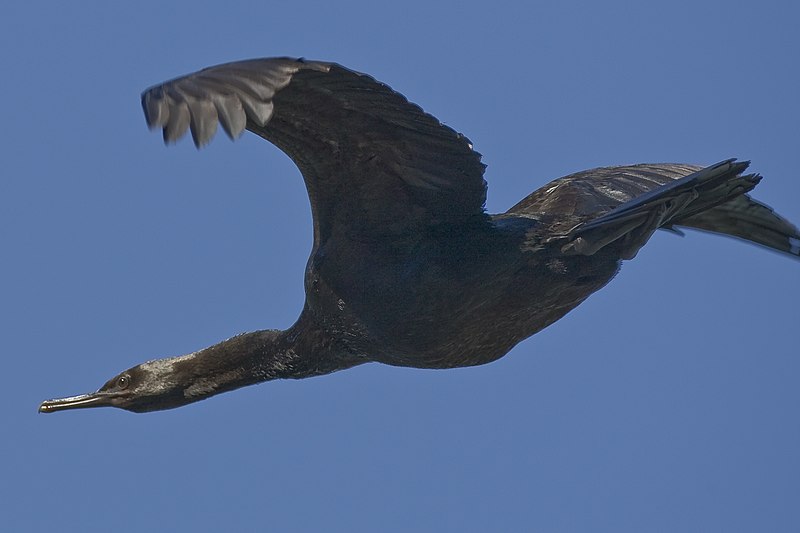
The pelagic cormorant, also known as Baird’s cormorant or violet-green cormorant, is a small member of the Phalacrocoracidae family and is often referred to as the Pelagic Shag.
It inhabits coastal areas and open oceans throughout Northern Pacific regions. These birds are relatively small in size, with dark greyish bodies and bright blue eyes that can be seen from far away.
Their wingspan extends up to two feet wide, allowing them to glide through air currents at rapid speeds while they hunt fish for food.
Their impressive diving ability allows them to plunge underwater to reach 30 meters deep.
The pelagic cormorants are quite social creatures who live together in large flocks during both summer and winter months, providing safety in numbers when hunting prey beneath the waves of their ocean home.
Scientific classification:
| Kingdom | Animalia |
| Phylum | Chordata |
| Class | Aves |
| Order | Suliformes |
| Family | Phalacrocoracidae |
| Genus | Urile |
| Species | U. pelagicus |
Also Featured In: Native South Korean Birds, Birds You’ll Find in the Sea
2. Black-Legged Kittiwake
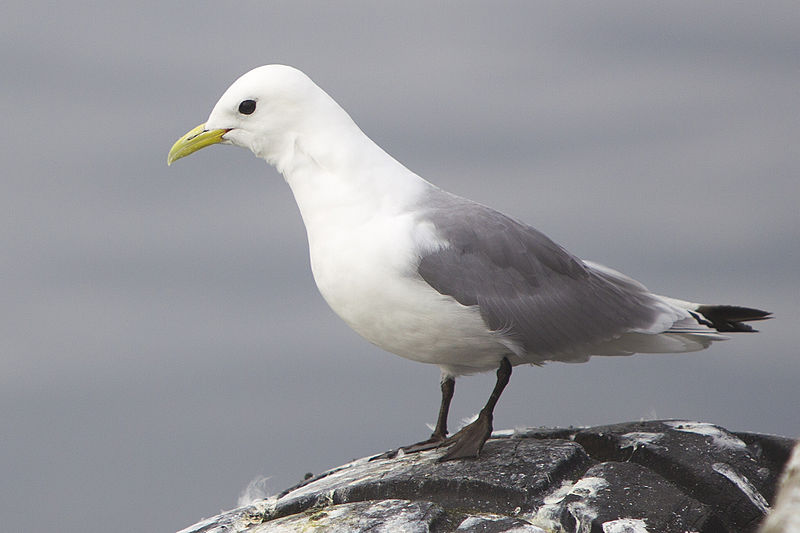
The Black-legged Kittiwake is a seabird of the gull family Laridae. It was first described by Carl Linnaeus in 1758, and its name derives from its distinctive call, which sounds like ‘kittee-wa-take, kitten-wa-make.’
These birds are mainly found along coastal regions with plenty of food sources such as plankton and fish. They have white bodies with slate-grey wings and black legs.
The bill is yellowish orange to red depending on age or season.
In winter, they migrate southwards away from their northern habitats into warmer waters for breeding purposes before returning again once spring arrives.
Scientific classification:
| Kingdom | Animalia |
| Phylum | Chordata |
| Class | Aves |
| Order | Charadriiformes |
| Family | Laridae |
| Genus | Rissa |
| Species | R. tridactyla |
Also Featured In: Birds of Netherlands, Common Cornwall Birds
3. Red Phalarope
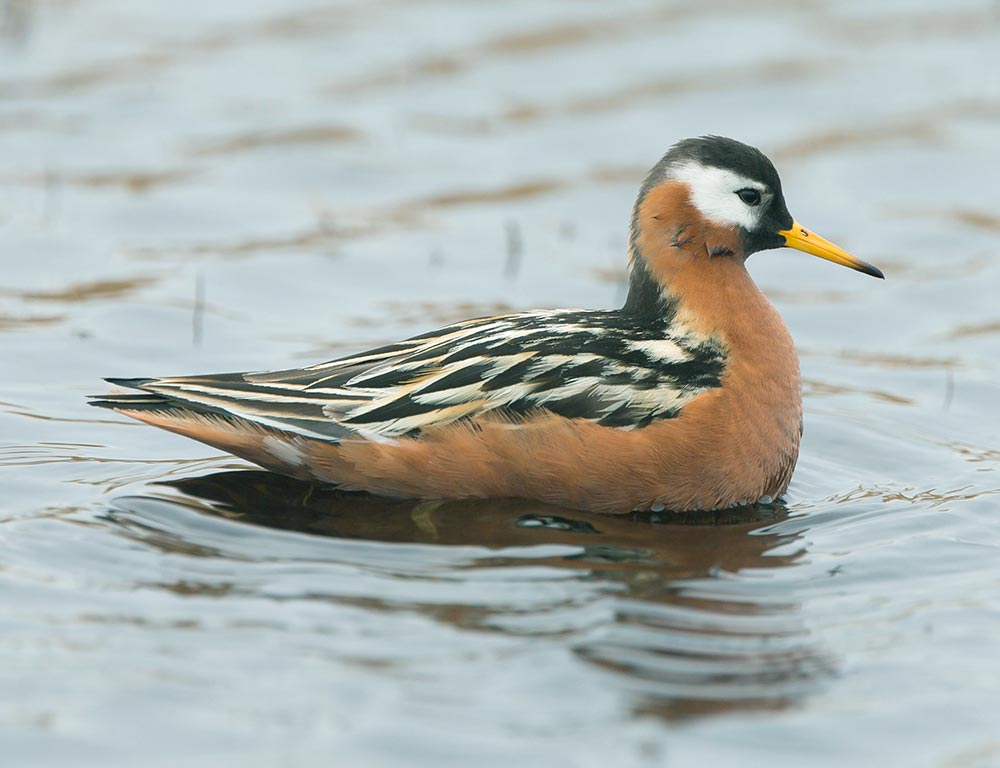
The Red Phalarope (Phalaropus fulicarius) is a small wader native to the Arctic regions of North America and Eurasia.
During the breeding season, it will migrate across oceanic routes and winter at sea on tropical oceans – an unusual behavior for a wader species.
First described in 1750 by George Edwards, this bird has distinctive red plumage with black markings around its neck and wings.
Its bill is thin but sharp, which helps it catch its prey, such as insects or fish eggs, from the water’s surface.
As they are highly agile birds, they can be found spinning rapidly in shallow waters whilst searching for food using their long toes as paddles.
Scientific classification:
| Kingdom | Animalia |
| Phylum | Chordata |
| Class | Aves |
| Order | Charadriiformes |
| Family | Scolopacidae |
| Genus | Phalaropus |
| Species | P. fulicarius |
Also Featured In: Kyrgyzstan Birds, Birds that Live in Greenland
4. Tufted Puffin
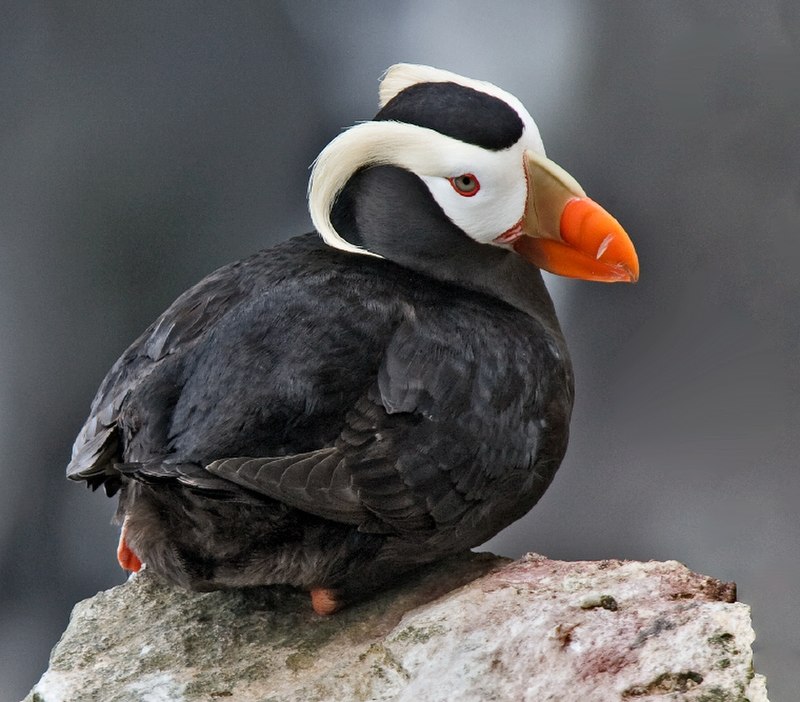
The Tufted Puffin is a medium-sized seabird belonging to the Alcidae family. It can be recognized by its thick red bill and yellow tufts, which give it an unmistakable appearance.
These birds inhabit the North Pacific Ocean and are relatively abundant compared to other puffin species.
They measure around 35 cm in length with a similar wingspan, making them one of the smaller members of their genus Fratercula.
Regarding feeding habits, they mainly eat small fish like herring or anchovies while at sea but also take advantage of food sources near shore when the breeding season arrives.
Their eggs are laid in burrows that these feathered creatures dig into cliff faces for protection from predators; once hatched, both parents help raise their young until they fledge later on in life.
Scientific classification:
| Kingdom | Animalia |
| Phylum | Chordata |
| Class | Aves |
| Order | Charadriiformes |
| Family | Alcidae |
| Genus | Fratercula |
| Species | F. cirrhata |
Also Featured In: Auks Species, Birds that Live in the Ocean
5. Thick-Billed Murre
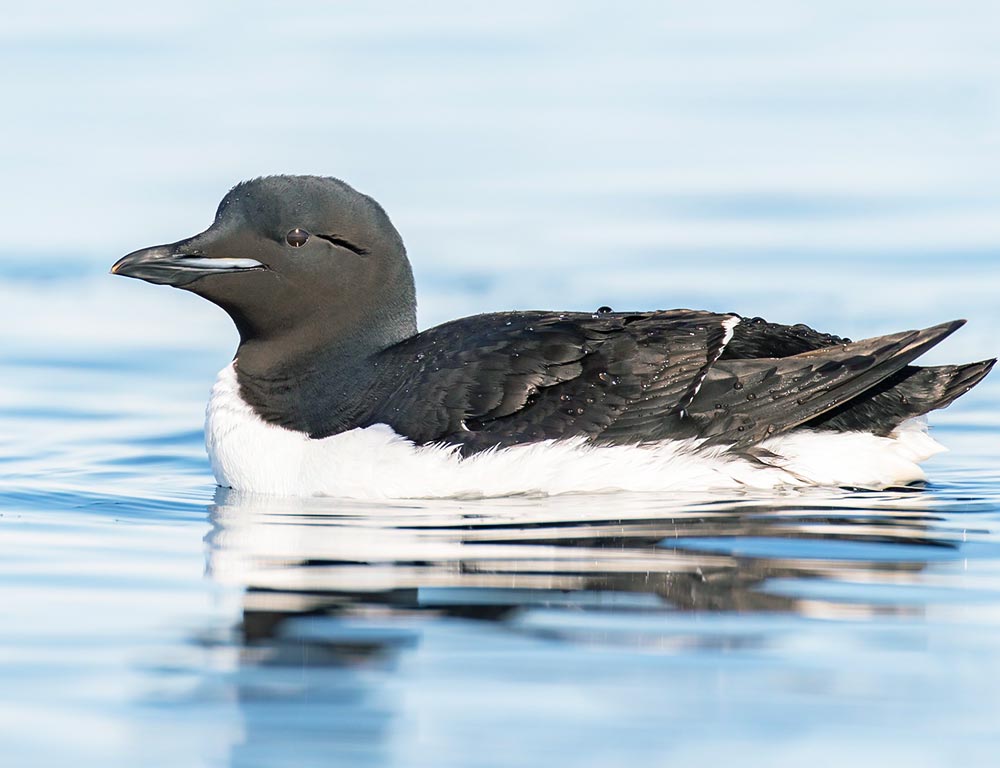
The Thick-Billed Murre is a species of seabird in the Auk family. It is named after Danish zoologist Morten Thrane Brünnich and nicknamed Pallas’ murre by some.
These birds have black plumage with white underparts, a thick bill, and short wings, which makes them excellent swimmers but poor flyers.
They can often be seen perched on cliffs or floating together at sea, feeding mainly on fish and mollusks.
The Thick-Billed Murres nest in colonies along coastal areas, laying their eggs directly onto rocky terrain or ledges instead of nests like other bird species do.
This tough little bird has also been known to survive harsh arctic winters.
Scientific classification:
| Kingdom | Animalia |
| Phylum | Chordata |
| Class | Aves |
| Order | Charadriiformes |
| Family | Alcidae |
| Genus | Uria |
| Species | U. lomvia |
Also Featured In: Birds that Live in Newfoundland and Labrador, Birds that Live in Svalbard
6. Horned Puffin
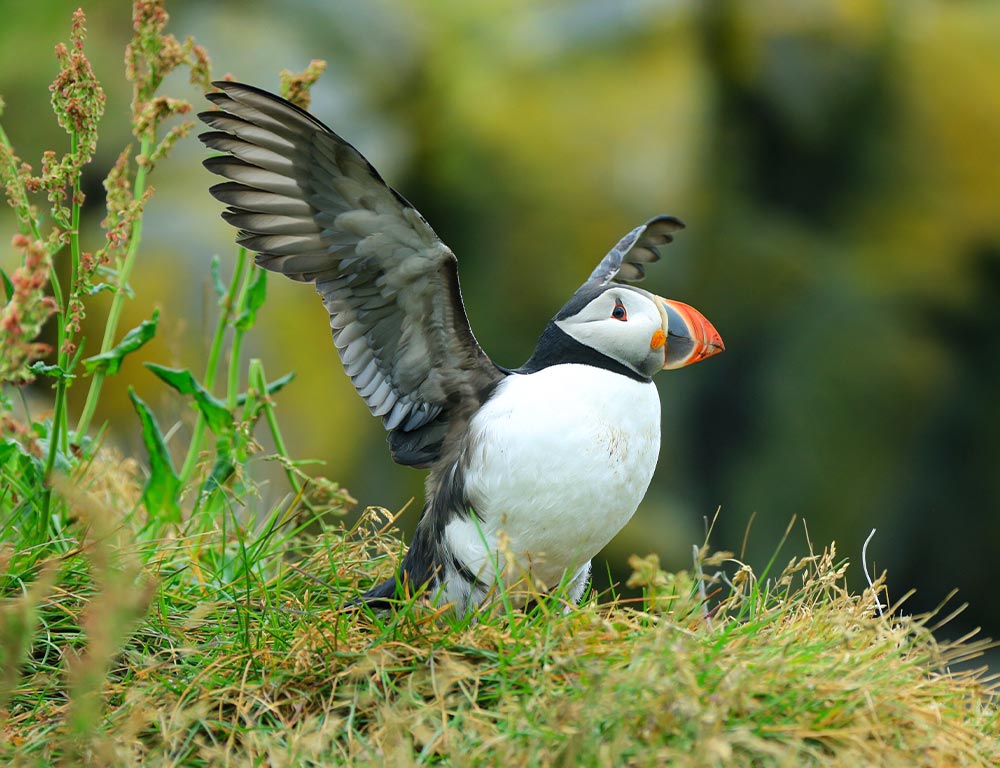
The Horned Puffin is an auk found in the North Pacific Ocean. It has striking black and white plumage, with its most distinctive feature being a “horn” of black skin located above each eye.
This species feeds mainly by diving for fish but also eats crustaceans and mollusks. They nest in colonies, often mixed with other auks like murres or guillemots.
Despite their small size (around 30 cm long), they are strong fliers and can travel large distances across open oceans when searching for food.
The Horned Puffin is currently listed as Least Concern due to stable populations throughout its range, although some declines have been noted from oil pollution and overfishing of prey species, which could become concerning if not addressed soon enough.
Scientific classification:
| Kingdom | Animalia |
| Phylum | Chordata |
| Class | Aves |
| Order | Charadriiformes |
| Family | Alcidae |
| Genus | Fratercula |
| Species | F. corniculata |
Also Featured In: Tundra Birds,
7. Pigeon Guillemot
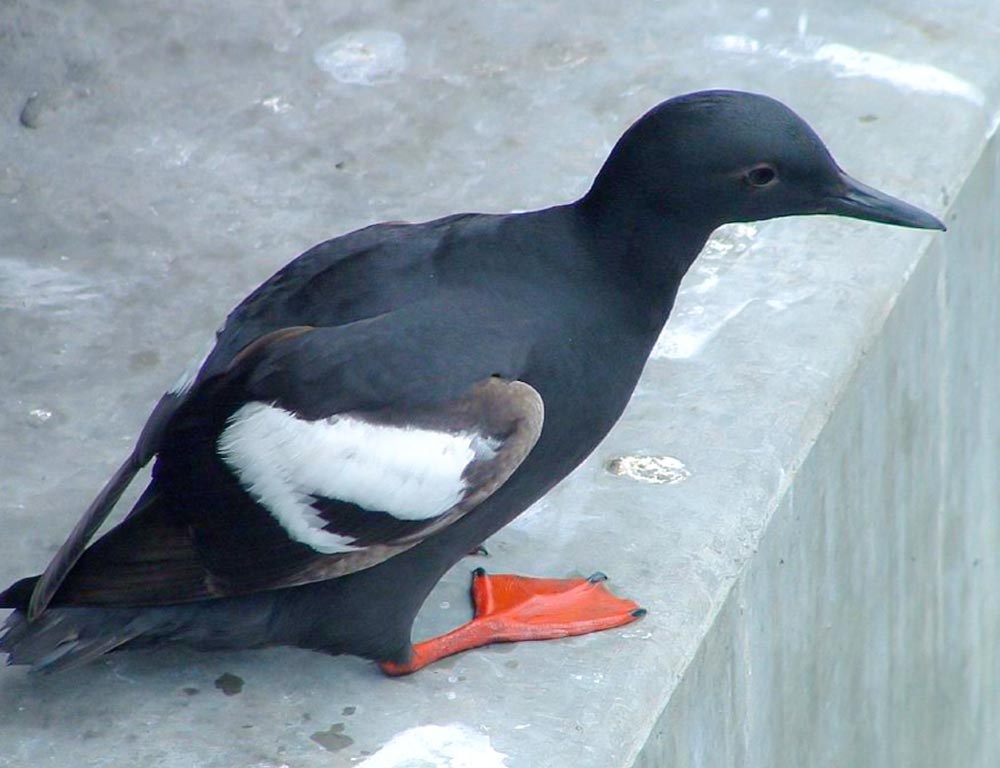
The pigeon guillemot is an interesting species of bird belonging to the auk family. It has five subspecies with striking black and brown plumage that shimmers in sunlight.
When breeding, they have a distinctive wing patch broken up by a brown-black wedge for easy identification.
They are closely related to spectacled guillemots and share many features, such as their razor-sharp beaks, which help them catch fish from the sea depths below.
These birds can often be spotted on rocky shores or offshore islands where there is plenty of food available for them to feed upon.
Their unique appearance makes them stand out amongst other seabirds, making it easier for humans to observe these wonderful creatures.
Scientific classification:
| Kingdom | Animalia |
| Phylum | Chordata |
| Class | Aves |
| Order | Charadriiformes |
| Family | Alcidae |
| Genus | Cepphus |
| Species | C. columba |
Also Featured In: Birds of Oregon Coast, Isla Lobos Birds You Need To Know
8. Red-Faced Cormorant
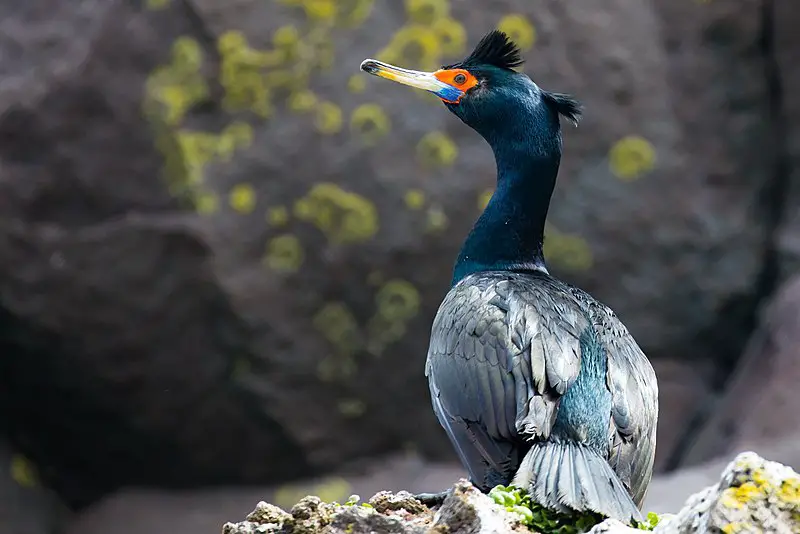
The Red-faced Cormorant is a species of bird from the Phalacrocoracidae family. It can be found in Japan, Korea, the Kuril Islands, the Kamchatka Peninsula, and the Aleutian Arc to Alaska’s Gulf of Alaska.
The bird was formally described by German naturalist Johann Friedrich Gmelin in 1789.
This medium-sized seabird has black feathers, an orange face and throat patch above its bill, and light green eyes that stand out against its dark head plumage.
During the breeding season, they will gather on cliffs or nesting colonies close to rocky shores, where they build nests using seaweed twigs or grasses lined with downy material taken from their body feathers for insulation.
They feed mainly on fish but also take crustaceans and small squid when available during certain times of the year.
Scientific classification:
| Kingdom | Animalia |
| Phylum | Chordata |
| Class | Aves |
| Order | Suliformes |
| Family | Phalacrocoracidae |
| Genus | Urile |
| Species | U. urile |
Also Featured In: Cormorant Species, Birds You’ll Find in Hokkaido
9. Spectacled Cormorant
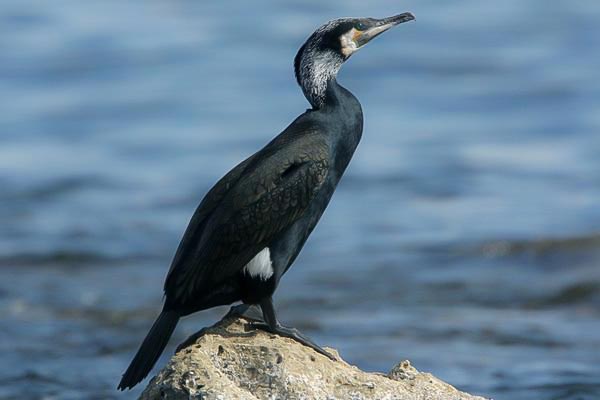
The Spectacled Cormorant is an extinct species of seabird that was once found on Bering Island and other places near the Komandorski Islands and Kamchatka in Russia.
It belongs to the cormorant family, a group of birds known for their ability to dive underwater and catch fish with their feet.
The bird had distinctive spectacle-like markings around its eyes, which gave it its name.
Recent evidence revealed that this species’ range may have been much wider than previously thought, as fossils were discovered in 2018, suggesting they inhabited more areas during prehistoric times.
This discovery indicates how drastically our environment has changed since then, leading to the extinction of certain animals like the Spectacled Cormorant due to human activity such as overfishing or pollution, among others.
Scientific classification:
| Kingdom | Animalia |
| Phylum | Chordata |
| Class | Aves |
| Order | Suliformes |
| Family | Phalacrocoracidae |
| Genus | Urile |
| Species | †U. perspicillatus |
10. Short-Tailed Shearwater
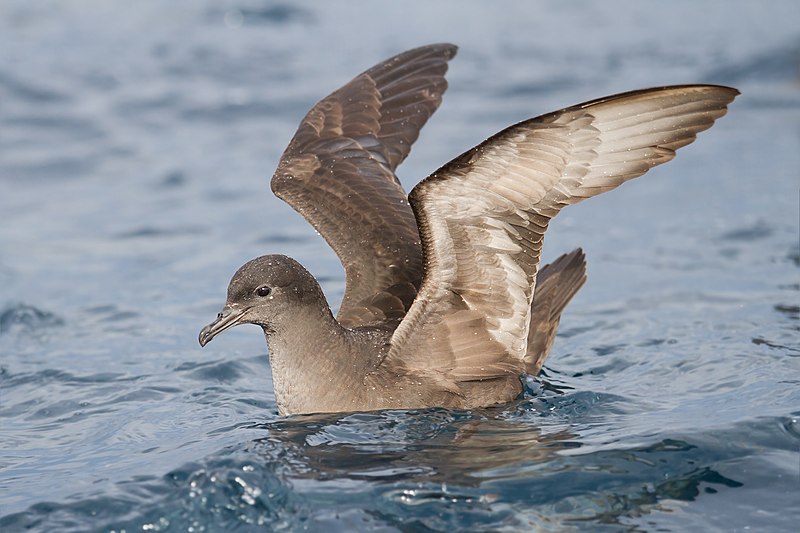
The Short-tailed Shearwater, also known as the Slender-billed Shearwater or Muttonbird, is a migratory seabird species that is native to Australia. It is the most common seabird in Australian waters and is commercially harvested for its chicks.
The bird mainly breeds on small offshore islands and feeds on fish, squid, and zooplankton. Its distinctive call can be heard from far away as it flies low over the ocean.
The Short-tailed Shearwater is an important species for both the ecosystem and the economy, providing food for predators such as foxes and eagles and supporting a small-scale commercial fishery.
The species faces threats from climate change, pollution, and overfishing, highlighting the need for conservation efforts to protect this important bird.
Scientific classification:
| Kingdom | Animalia |
| Phylum | Chordata |
| Class | Aves |
| Order | Procellariiformes |
| Family | Procellariidae |
| Genus | Ardenna |
| Species | A. tenuirostris |
Also Featured In: Most Common Western Australia Birds, Birds of Tasmania
11. Rock Sandpiper
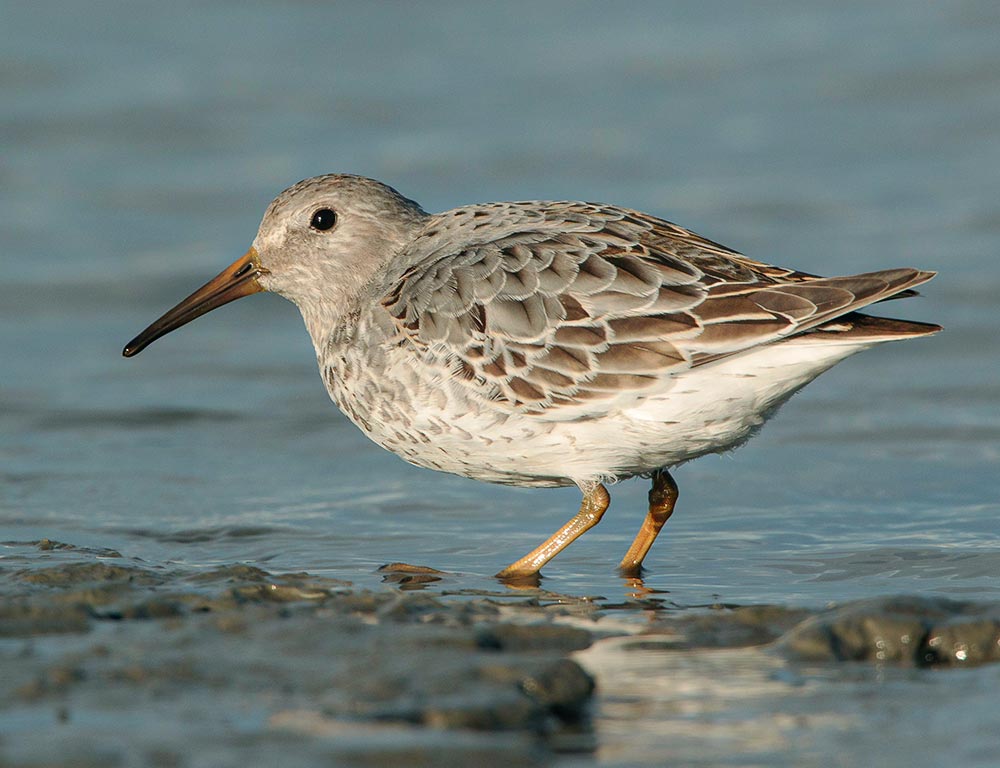
The rock sandpiper is a resilient shorebird found in arctic and subarctic regions. Its range includes Alaska, the Chukotka, and Kamchatka Peninsulas.
This small sandpiper belongs to the Scolopacidae family and shares a close kinship with the purple sandpiper found in arctic regions of northeast Canada and northern Europe.
While the rock sandpiper is hardy enough to breed in these cold environments, it also needs protection to safeguard its habitat and population.
Studies are ongoing to monitor its breeding patterns and migration routes to understand better how this unique bird adapts to its environment.
Overall, the rock sandpiper is a fascinating example of the resilience and adaptability of arctic wildlife.
Scientific classification:
| Kingdom | Animalia |
| Phylum | Chordata |
| Class | Aves |
| Order | Charadriiformes |
| Family | Scolopacidae |
| Genus | Calidris |
| Species | C. ptilocnemis |
12. Red-Legged Kittiwake
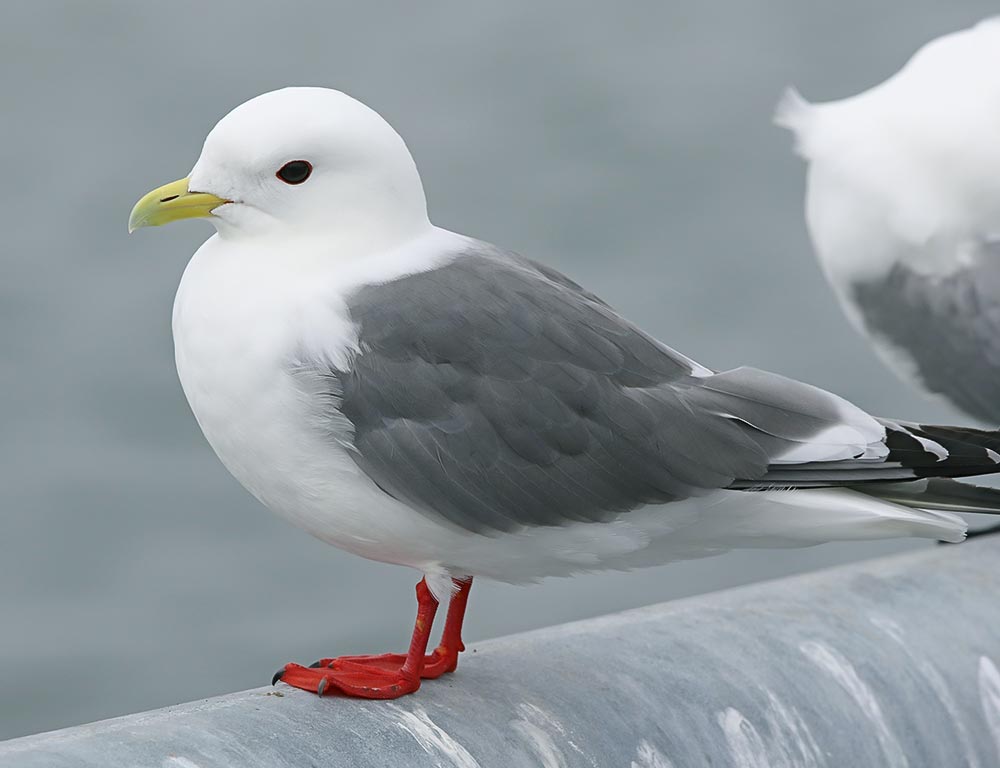
The red-legged kittiwake bird is a seabird belonging to the Laridae gull family. It breeds in certain locations, such as the Pribilof Islands, Bogoslof Island, and Buldir Island, all of which are in the Bering Sea off the coast of Alaska.
It also breeds in the Commander Islands in Russia. During the winter season, this bird species can be found at sea. This bird is not commonly found in other locations outside of its natural habitat in the Pacific subarctic region.
The red-legged kittiwake bird can be easily identified by its red legs, which is absent in other gull species.
Scientific classification:
| Kingdom | Animalia |
| Phylum | Chordata |
| Class | Aves |
| Order | Charadriiformes |
| Family | Laridae |
| Genus | Rissa |
| Species | R. brevirostris |
Conclusion
The diverse avian community near Bering Island showcases a remarkable adaptation and survival in a challenging environment.
From the majestic sea eagles to the diminutive but resilient songbirds, each species contributes uniquely to the ecological tapestry of the region.
Their presence highlights the richness of the local biodiversity and underscores the importance of conservation efforts in these fragile ecosystems.
These birds, thriving amidst the harsh climatic conditions and the rugged landscapes, are a testament to the resilience and beauty of nature.
Their continued survival depends on our awareness and actions towards preserving their habitats, making them symbols of both natural wonder and a call to environmental stewardship.